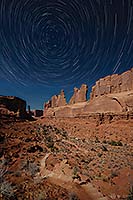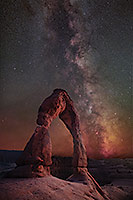DARK SKY HAPPENINGS - January 2021
Moab
UT (at City Hall)
38O34’ N Latitude
109O33’ W Longitude
4048 ft - 1234 m |
Tips for Night Photography in Moab
By Temu Nana
Sunrise-Sunset for January(The time of sunrise and sunset assumes a flat horizon. Actual time may
vary depending upon the landscape.) |
DATE |
SUNRISE |
SUNSET |
Fri, Jan 1 |
7:35am |
7:35am |
Sat,Jan 2 |
7:36am |
7:36am |
Sun,Jan 3 |
7:36am |
7:36am |
Mon, Jan 4 |
7:36 am |
7:36 am |
Tue, Jan 5 |
7:36 am |
7:36 am |
Wed, Jan 6 |
7:35 am |
7:35 am |
Thu, Jan 7 |
7:35 am |
7:35 am |
Fri,Jan 8 |
7:35am |
7:35am |
Sat,Jan 9 |
7:35am |
7:35am |
Sun,Jan 10 |
7:35am |
7:35am |
Mon,Jan 11 |
7:35am |
7:35am |
Tue,Jan 12 |
7:34am |
7:34am |
Wed,Jan 13 |
7:34am |
7:34am |
Thu,Jan 14 |
7:34am |
7:34am |
Fri,Jan 15 |
7:33am |
7:33am |
Sat,Jan 16 |
7:33am |
7:33am |
Sun,Jan 17 |
7:32am |
7:32am |
Mon, Jan 18 |
7:32am |
7:32am |
Tue,Jan 19 |
7:31am |
7:31am |
Wed,Jan 20 |
7:31am |
7:31am |
Thu,Jan 21 |
7:30am |
7:30am |
Fri,Jan 22 |
7:30am |
7:30am |
Sat,Jan 23 |
7:29am |
7:29am |
Sun, Jan 24 |
7:28am |
7:28am |
Mon,Jan 25 |
7:28am |
7:28am |
Tue,Jan 26 |
7:27am |
7:27am |
Wed,Jan 27 |
7:26am |
7:26am |
Thu,Jan 28 |
7:25am |
7:25am |
Fri,Jan 29 |
7:25am |
7:25am |
Sat,Jan 30 |
7:24am |
7:24am |
Sun,Jan 31 |
7:23am |
7:23am |
|
 While millions come annually with camera in hand to capture daytime views of the incredible formations and colors of canyon country, an increasing number of photo enthusiasts are returning to the parks at night to capture that same beauty under the stars! While millions come annually with camera in hand to capture daytime views of the incredible formations and colors of canyon country, an increasing number of photo enthusiasts are returning to the parks at night to capture that same beauty under the stars!
If you’re thinking of trying your hand at night photography, here are a few tips/tricks for better results:
• Use a camera that can expose for up to 30 seconds. Most DSLR’s and mirrorless cameras allow you to set your exposure time up to 30 secs (or longer). Camera phones—while improving—are still not up to the task of producing quality photos at night.
• Use a sturdy tripod. Because you’ll be exposing the camera for long periods, you need a sturdy base so your images will be sharp!
• Focus on a star with your LCD screen and digital zoom. Use the LCD screen on the back of your camera—not the viewfinder—and find a star. Use the digital zoom—NOT the zoom ring on your lens—to enlarge that star up to 10x. Then manually focus on the star by adjusting the focus ring on your lens!
• Avoid star trails. While we need long exposures to capture the night sky, we also need to remember that the stars are moving! Expose for too long and the stars will appear as streaks, not points. Aim for 10-20 sec exposures and adjust from there.
• Moon or no Moon? If you want to capture the Milky Way, shoot when there is little or no moon. If you prefer to shoot night landscapes, some—or lots—of moonlight will help illuminate the ground!
• Use a wide-angle lens to include foreground object! The night sky is incredible on its own, but a sense of scale and place makes a great photo! Using a wide-angle lens will allow you to capture lots of the sky as well as some of the spectacular landscape around you.
DO NOT LIGHT “PAINT” Using artificial light to “paint” a foreground object (such as Delicate Arch) is not allowed in the national parks and can seriously annoy other photographers. Instead, try taking your foreground photos during blue hour (sunset) or at night with a very long exposure (1-3 minutes) and blending it with a different photo exposed for the sky/Milky Way. Or plan for an evening with a very little bit of moonlight. This allows you to light the foreground and still capture the night sky!
The Moab Dark Skies was established by the Friends of Arches and Canyonlands Parks in conjunction with the National Park Service and Utah State Parks Division of Natural Resources. |
MOON HAPPENINGS
Jan 20 - First Quarter at 2:01 pm
Jan 28 - Full Moon at 12:16 pm
|